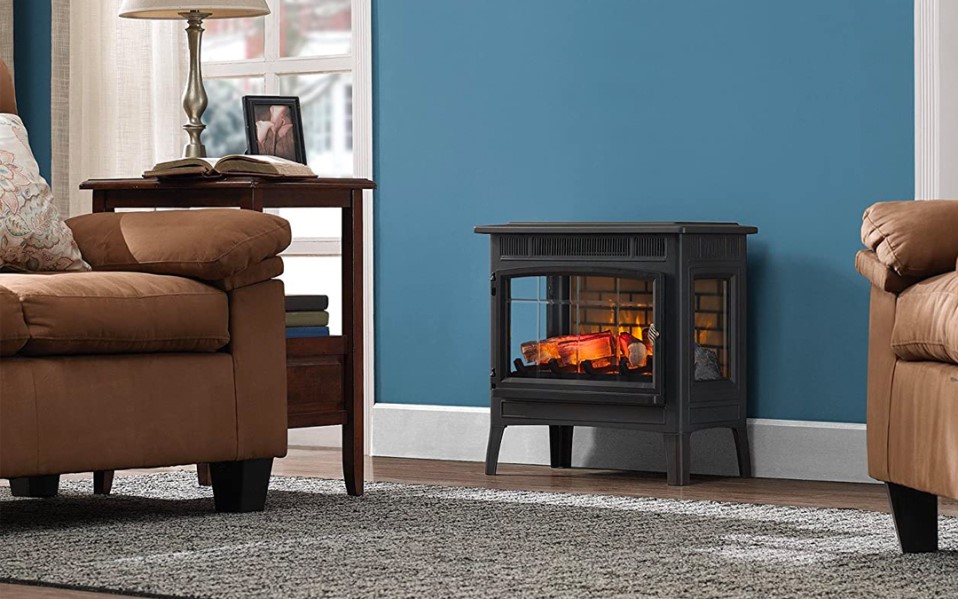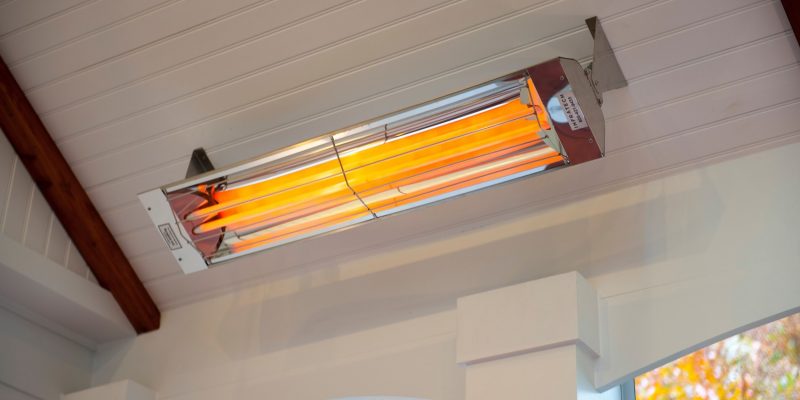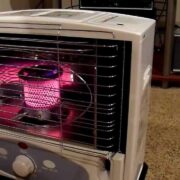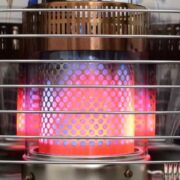Infrared heat is a type of radiation that emits from the Sun, coals, fire, and even from your own body. They have been in the environment for a longer period if the Sun itself.
Even during winters, the heat waves emitting from the Sun make us all warm and cozy, the same is applied if you put an infrared heater inside your home. The heater comprises coils and a reflector that send the light outwards and then the objects around that area, and you feel that heat touching your body.
These heaters do not waste time in heating up the room, as the infrared lights they emit are made to warm the environment like objects and our body, and not the air.
It is the best choice to buy this heater since it does not make any sort of noise, caused by the heaters with fans and is super-efficient too, and they are environment-friendly too, they do not produce any kind of gas which might affect your environment.
However, many people have recommended to not use this heater for large spaces, and it is designed to heat up only one specific area or room, and the moment you shut it off all the heat will be gone since it does not heat up the air.
It might also not be suitable to keep in your bedroom at night due to the orange, bright glow it emits which might disturb your sleep every now and then.
Apart from this, infrared heaters are popular on-demand, and many people have found them to be effective and efficient. One of the key factors that people look at while buying is the cost, and to guess the bill on your infrared heater, it is essential you check home much electricity it produces.
Here’s The Best Way to Check the Electricity and Cost of Your Infrared Heater

Consumption
Like any other electrical appliance, infrared heaters also work on ratings. Ratings are the total and exact measurements of how much energy the model requires to run.
You can find these ratings either on the model itself or on the manual that came with it, depending upon the size and usage, these ratings can go from 40Watts – 1500Watts.
Method

The simplest method that you can opt for to check the consumption of your heater’s electricity is to first look at the rating. After that, check how much electricity is produced in one watt or kilowatt and how much it costs, this you can find in any of the electrical bills.
When you have gathered all the three numbers, multiply them together, and the number that comes out is the cost you will have to pay for your heater. A 1500-watt heater will cost you about 25 cents to run for an hour, and if it is running for more hours, then more the bill.
Efficiency
Infrared heaters have been told to work more efficiently than any other type of heaters, it produces heat in a far better way than others. The energy inside the heater never gets wasted, and almost all its energy gets converted into heat and thrown out.
This heater also uses 60% less electricity than others, so your living room as small as a 400-watt heater will do its work. The same can go for your bedroom too, your cost of the bill or the model will increase depending upon the usage of the model, how much electricity it is taking up.
Conclusion
Infrared heaters are cheap, emit heat equivalent to that of a Sun, however, one must be relatively close to the heater to absorb the heat, and since it does not warm the air around you, your room temperature will still be cold even after shutting down.
If we begin comparing, ceramic heater vs infrared heater, then there is not that much of a difference, both are the perfect choices to buy for heating up a small portion of your room.
Both are affordable and provide great comfort, however, ceramic heaters do warm up the air in your room a little bit, unlike the infrared heaters, but the warmth is more in infrared than in ceramic heater.










[…] are here to stay. Smart meters can save homes and businesses money on their usage, as users can adjust their habits accordingly. Plus, consumers don’t have to worry about “estimated” […]